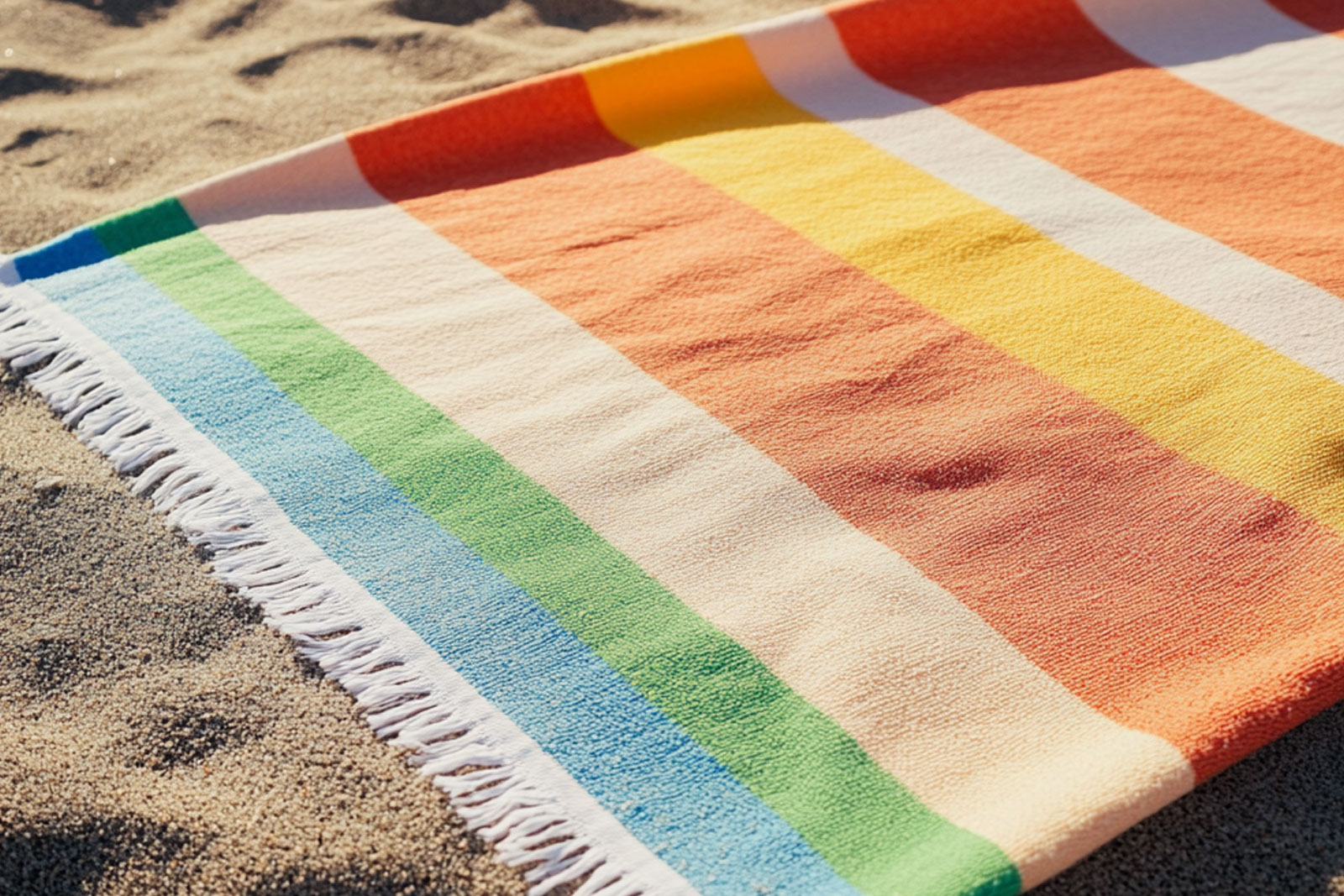The sun is blazing, the waves are calling, and your beach bag is packed. But wait, is your beach towel up to the task? A beach towel isn’t just a piece of fabric; it’s your sandy sanctuary, your post-dip drying station, and sometimes, even your impromptu picnic blanket. Choosing the right one can elevate your beach experience from good to absolutely glorious. Let’s dive into the essential factors to consider when selecting your perfect beach companion.
1. Material Matters: The Fabric of Your Comfort
The material of your beach towel dictates its absorbency, softness, and drying speed. Here’s a breakdown of the most common options:
Cotton:
Turkish Cotton: Known for its long fibers, Turkish cotton towels are exceptionally soft, lightweight, and quick-drying. They become even softer and more absorbent with each wash, making them a luxurious choice.
Egyptian Cotton: Similar to Turkish cotton, Egyptian cotton boasts long fibers, resulting in a plush and highly absorbent towel. However, they tend to be thicker and may take longer to dry.
Regular Cotton/Terry Cloth: The classic choice, terry cloth is thick and absorbent. However, it can be bulky, heavy, and slow to dry, often trapping sand.
Microfiber:
Lightweight, ultra-absorbent, and quick-drying, microfiber towels are ideal for travelers and those who prioritize portability. They are also sand-resistant, making them a practical option for sandy beaches.
Linen:
Linen is another fast drying option, and is very durable. It also tends to be very sand resistant.
2. Size and Shape: Finding Your Ideal Coverage
Consider how you plan to use your beach towel. If you enjoy sprawling out in the sun, opt for a larger size. If portability is your priority, a compact towel is the way to go.
Standard Size: Typically around 30 x 60 inches, this size is sufficient for most individuals.
Oversized: Ideal for lounging or sharing, oversized towels can measure up to 40 x 70 inches or more.
Round Towels: Stylish and spacious, round towels are perfect for those who like to spread out.
Kid-Friendly Towels: Smaller and often featuring fun designs, these towels are perfect for children.
3. Absorbency and Drying Speed: Staying Dry and Comfortable
A good beach towel should effectively absorb moisture and dry quickly.
Absorbency: Look for towels with a high GSM (grams per square meter) for greater absorbency. However, higher GSM also means a thicker and potentially heavier towel.
Drying Speed: Microfiber and Turkish cotton towels excel in this category, drying much faster than traditional terry cloth.
4. Sand Resistance: Keeping the Beach at the Beach
Sand can be a beachgoer’s nemesis. Some towels are designed to minimize sand clinging.
Microfiber and linen: These materials are naturally sand-resistant, allowing sand to shake off easily.
Flat-woven towels: Unlike terry cloth, flat-woven towels don’t have loops that trap sand.
5. Durability and Care: Longevity for Your Investment
A quality beach towel should withstand frequent washing and exposure to sun, saltwater, and chlorine.
Reinforced Edges: Look for towels with double-stitched or reinforced edges to prevent fraying.
Colorfastness: Choose towels that are colorfast to prevent fading after multiple washes.
Easy Care: Opt for machine-washable towels for convenient cleaning.
6. Style and Design: Expressing Your Personality
Beach towels come in a vast array of colors, patterns, and designs.
Solid Colors: Classic and versatile, solid-colored towels complement any beach ensemble.
Stripes and Patterns: Add a touch of personality with striped, patterned, or tropical-themed towels.
Novelty Designs: From playful prints to licensed characters, novelty towels are perfect for kids and adults alike.
7. Special Features: Enhancing Your Beach Experience
Some beach towels come with added features for enhanced convenience.
Pockets: Ideal for storing small items like phones, keys, or sunscreen.
Hooded Towels: Perfect for kids, hooded towels provide extra warmth and sun protection.
Travel Towels: Compact and lightweight, travel towels are designed for easy packing.
Tips for Maintaining Your Beach Towel:
Wash before first use: This increases absorbency.
Wash after each use: To remove sand, salt, and sunscreen residue.
Avoid fabric softeners: They can reduce absorbency.
Tumble dry on low heat or air dry: To maintain fabric quality.
Shake out sand before washing: To prevent damage to your washing machine.
In Conclusion:
Choosing the perfect beach towel involves considering material, size, absorbency, durability, and style. By understanding your needs and preferences, you can find a towel that enhances your beach experience and keeps you comfortable all summer long. Whether you prioritize luxury, practicality, or style, there’s a beach towel out there that’s perfect for you. So, go ahead, find your sandy sanctuary, and make the most of your beach days!








